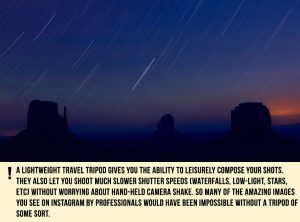There is no denying that picture perfect postcards on Facebook and Instagram make for much travel inspirations. For the ones bitten by wanderlust, a mere image of a serene beach in a faraway island is compelling enough to start flight searching. It is then about time that when you get there, you get that perfect swoon-worthy shot of you own so that you can spread the love on your account. How? By simply befriending the camera.
As with everything, you have to start and end with the basics. Just remember these 5 simple rules when taking a picture and your clicks will be immeasurably better.
Light Up
Light is the most important ingredient for great photography — and soft, warm, morning light creates amazing images.

Photographers swear by good lighting. The right exposure can make or break a picture, they say. And when you travel you best bet is natural light. For the best pictures, wake up early and make the most of the early sun’s rays. But don’t render sunsets useless just as yet. The hour after sunrise and the hour before sunset are nicknamed “golden hours” because of their soft, warm tones and eye-pleasing shadows.
Tip: Adding a simple little flash speedlight can make a world of difference in taking amazing pictures in difficult lighting conditions such as when travelling to places with dark winters or for specific spots like the Cu Chi Tunnels in Vietnam, the Catacombs in Paris etc.
Compose the shot
Take a minute or more to frame your shot. Before you click, decide what you want to see and from where. Start with a wide shot, then a mid-range version, and finally, get up-close and personal to get a variety of perspectives.

A different angle is all it takes for your photograph to stand out. Every picture can look different depending on where and how it is shot. Don’t shy away from standing up straight, lying on the ground for a low angle or even to climb up something nearby and shoot from a higher angle. Along with different angles, try shooting from different distances too. Include powerful foreground, mid-ground, and background elements too to give your image more depth.
Tip: For moments when you want to capture everything you see in front of you such as vast landscapes, consider carrying a Wide Angle lens with you. Your stock DSLR lens probably starts at 18 mm (the 18-55mm zoom lens being the most popular). The wide angle lens start at 10mm or even lower, enabling you to capture a much wider image. Wide angle lenses are a must for capturing those amazing starry nights.
Pack a travel tripod
A lightweight travel tripod gives you the ability to leisurely compose your shots. They also let you shoot much slower shutter speeds (waterfalls, low-light, stars, etc) without worrying about hand-held camera shake. So many of the amazing images you see on Instagram by professionals would have been impossible without a tripod of some sort. Professionals recommend it especially for sharp landscapes, those starry nights, self-portraits, flowing water shots, and sunsets/sunrises.
 If you find tripods a bit too bulky and daunting, fret not – you can consider monopods/ gorilla pods that are super compact and extremely versatile. You’ll have greater creative control and comfort over your camera’s manual settings when you use these accessories.
If you find tripods a bit too bulky and daunting, fret not – you can consider monopods/ gorilla pods that are super compact and extremely versatile. You’ll have greater creative control and comfort over your camera’s manual settings when you use these accessories.
Make a connection
Actions speak louder than words and capturing human subjects gives any picture that understated edge. Say hello, introduce yourself break the ice with locals before you ask for a portrait.

Portraits or close shots of human life in any place score more points than even the most stunning landscape. Travel after all is about exchanging thoughts and cultures and a camera is your safest gate pass. You might just earn you a local friend and get access to better viewing spots and secret locations, in the bargain.
Tip: The best portraits are achieved by using a prime lens such as the 50mm f1.4. The depth of field that this lens can provide will literally make your subject jump out of the frame.
Tell a tale
Add depth to your picture by telling your story through it. How you got there, what you loved about it or simply how you felt. That is what will strike a chord with the person viewing it.

Your audience does not have the advantage of experiencing the scenery in all its beauty as you did and thus as a photographer it is more so important you communicate not just the view but also the journey and your experience to them. It is your job to bring the two-dimensional image to life. Use emotion, find and freeze moments, and incorporate the human element so your shots resonate with viewers.


